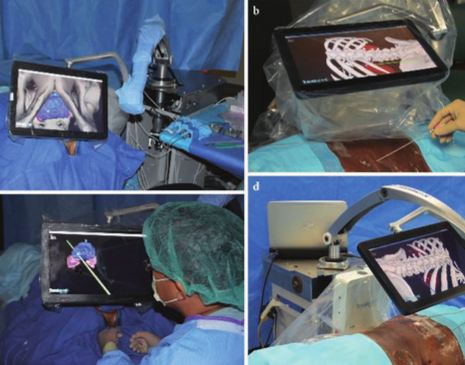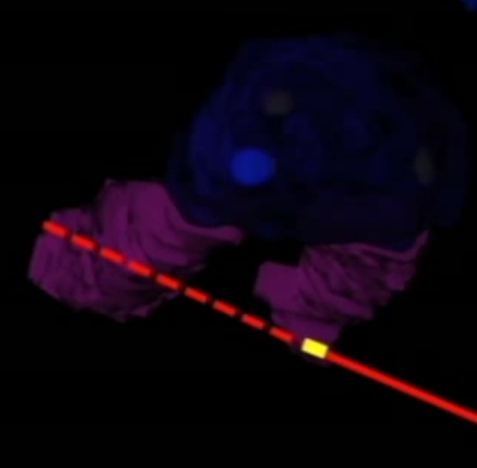
Video: Is silodosin your best option when selecting the right α-blocker?
A significant proportion of aging men will have bothersome LUTS and will eventually seek help for this problem. Various medical therapies are available to help aleviate these symptoms. Amongst the various treatments, α-blockers are some of the most widely used drugs. Novara et al. [1] recently published a report on the efficacy and safety of silodosin in a pooled analysis of individual patient data from three registrational randomized controlled trials comparing silodosin and placebo in…

Article of the Month: Have TRP channels fulfilled their promise in LUTS?
Every Month the Editor-in-Chief selects the Article of the Month from the current issue of BJUI. The abstract is reproduced below and you can click on the button to read the full article, which is freely available to all readers for at least 30 days from the time of this post.
In addition to the article itself, there is an accompanying editorial written by a prominent member of the urological community. This blog is intended to provoke comment and discussion and we invite you to use the…

Editorial: TRP channel – a reality that still requires many years of scientific efforts
Seventeen years have elapsed since the capsaicin receptor was first cloned by Caterina et al. [1] and the excellent review with an unusual provocative title by Deruyver et al. [2] was written. The capsaicin channel, re-named transient receptor potential (TRP) vanilloid receptor subtype 1 (TRPV1), is now commonly referred to as the founding member of the TRP family, as it currently includes 28 related channels, a number difficult to foresee in those early years [3].
TRP channels have…

Video: TRP channel modulators as pharmacological treatments for LUTS – myth or reality?
Transient receptor potential channel modulators as pharmacological treatments for lower urinary tract symptoms (LUTS): myth or reality?
Yves Deruyver*‡¶, Thomas Voets†¶, Dirk De Ridder*‡¶and Wouter Everaerts*§¶
*Laboratory of Experimental Urology, Department of Development and Regeneration,† Laboratory for Ion Channel Research, Department of Molecular Cell Biology, KU Leuven, ‡University Hospitals Leuven, ¶TRP Research Platform Leuven (TRPLe), Leuven, Belgium,…

Article of the Week: Using cardiopulmonary reserve to predict complications following radical cystectomy
Every week the Editor-in-Chief selects the Article of the Week from the current issue of BJUI. The abstract is reproduced below and you can click on the button to read the full article, which is freely available to all readers for at least 30 days from the time of this post.
In addition to the article itself, there is an accompanying editorial written by a prominent member of the urological community. This blog is intended to provoke comment and discussion and we invite you to use the comment…

Editorial: Cardiopulmonary exercise testing: fortune-teller or guardian angel?
In this month's issue of BJUI, Tolchard et al. [1] describe their experience with the use of cardiopulmonary exercise testing (CPET) in patients undergoing radical cystectomy. In particular, they assess the value of cardiopulmonary reserve in predicting complications and the length of stay in hospital after surgery.
The origin of CPET is in non-surgical specialties for the further investigation of patients with cardiac failure or unexplained breathlessness [2], but it subsequently…

Article of the Week: 3D percutaneous navigation, integrating position-tracking with a tablet display
Every week the Editor-in-Chief selects the Article of the Week from the current issue of BJUI. The abstract is reproduced below and you can click on the button to read the full article, which is freely available to all readers for at least 30 days from the time of this post.
In addition to the article itself, there is an accompanying editorial written by a prominent member of the urological community. This blog is intended to provoke comment and discussion and we invite you to use the comment…

Editorial: A 3D window into the body?
If real-time tracking is accurate enough to tell you that Roger Federer's serve was on the line or that David Beckham's free kick was indeed over the goal line, then surely tracking systems could help us guide needles and wires into different parts of the body? In this month's BJUI, Marien et al. give us an insight into the future of access for percutaneous procedures [1]. Currently, percutaneous access to the body for biopsy, renal access or treatment of malignancy is usually based on two-dimensional…

Video: Percutaneous targeting using 3D navigation that integrates position-tracking technology with a tablet display
Three-dimensional navigation system integrating position-tracking technology with a movable tablet display for percutaneous targeting
Arnaud Marien, Andre Castro de Luis Abreu, Mihir Desai, Raed A. Azhar, Sameer Chopra, Sunao Shoji, Toru Matsugasumi, Masahiko Nakamoto, Inderbir S. Gill and Osamu Ukimura
USC Institute of Urology, Center for Focal Therapy of Prostate and Kidney Cancer, Keck School of Medicine, University of Southern California, Los Angeles, CA, USA
OBJECTIVES
To…

Article of the Week: With a previous negative prostate biopsy and a suspicious lesion on MRI, is a 12-core biopsy still necessary in addition to a targeted biopsy?
Every week the Editor-in-Chief selects the Article of the Week from the current issue of BJUI. The abstract is reproduced below and you can click on the button to read the full article, which is freely available to all readers for at least 30 days from the time of this post.
In addition to the article itself, there is an accompanying editorial written by a prominent member of the urological community. This blog is intended to provoke comment and discussion and we invite you to use the comment…
